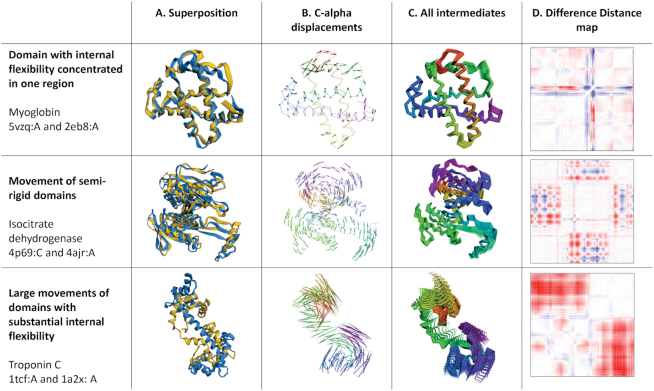Figure 1.
Different types of protein flexibility illustrated by FATCAT. Three pairs of protein structures with different character of conformational differences were compared using FATCAT. In contrast to traditional structural superposition (left-most column) graphically presented FATCAT results make it possible to quickly assess the character of conformational differences between two structures. For instance, C-alpha displacements reveal regions where rotational movements and DDMs allow identification of internally rigid domains (diagonally located squares without substantial changes in distances e.g. isocitrate dehydrogenase) and regions of high local flexibility (narrow ‘stripes’ of large conformational changes as seen in DDM of myoglobin)

